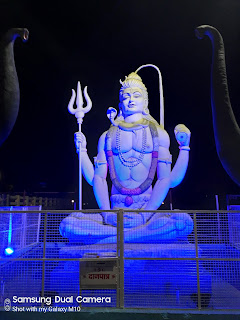History of Applying Sindoor on Forehead by Indian Women
Sindoor (vermilion) is a red, orange or ochre colored cosmetic powder used by mainly married women of Indian subcontinent. It is made from cinnabar (a naturally occurring form of mercury sulfide), turmeric and lime.
Significance of Applying Sindoor by Indian Women-
Sindoor has a lot of importance in Indian culture. There is a tradition of applying sindoor on parting of hairs by married Hindu women. It is considered very auspicious and applied for long life of their husbands. Traditionally, the unmarried women and widows do not apply sindoor. A woman's bindi may also be made from sindoor.
Mythology-
Sindoor is symbolized as energy of goddess Parwati, the wife of god Shiva. The Indian women believe that the goddess Parwati protects all those men whose wives apply sindoor on their forehead.
Historicity of Applying Sindoor as Cosmetic-
The practice of cosmetics is believed to have originated in Egypt and Indian subcontinent, but the earliest records of use of cosmetic substances date back to the culture of Indus valley civilization.
(ref- Lal B B, The Saraswati Flows On: The Continuity of Indian culture, 2002)
The women of Indus valley might have used rectangular pieces of ochre with beveled ends as cosmetics.
(ref- Mackay, E. J. A. (1937). "Excavations at Chanhu-daro". Journal of the Royal Society of Arts. 85 (4405): p-527-545.)
Early terracotta female figurines of many Indus valley civilization sites like Mehargarh (dating around 4th millennium BC) reveal the use of red ochre to decorate the central part of hairs. Later cinnabar was also used for the same purpose.
(ref- an essay on 'Metal and Metalworking' by Jonathan Mark Kenoyer. Peter J. Claus, Sarah Diamond, etc (2003), South Asian Folklore: An Encyclopedia: Afghanistan, Bangladesh, India, Nepal, Pakistan, Srilanka; Taylor and Francis. p-398)
Application of sindoor is also mentioned in Mahabharata, written around 5th century BC. Draupadi, the queen of Pandavas wiped off her sindoor in disgust and despair at the happening in Hastinapur.
The use of sindoor as cosmetics is also mentioned in Lalita Sahasranam, a text of Brahmand Puran which is one of the oldest Puran and composed roughly during 5th century BC- 5th century CE.
Adi Shankaracharya in 8th century CE, also wrote about tradition of applying sindoor in his creation 'Saundarya Lahiri'.
Conclusion-
From the above mentioned references, we can conclude that the application of sindoor is a very old and auspicious tradition among the married Indian women and has been going on since millennia.











Thanks for sharing such informative Blog. Direct Cremation Visit our site.
ReplyDelete